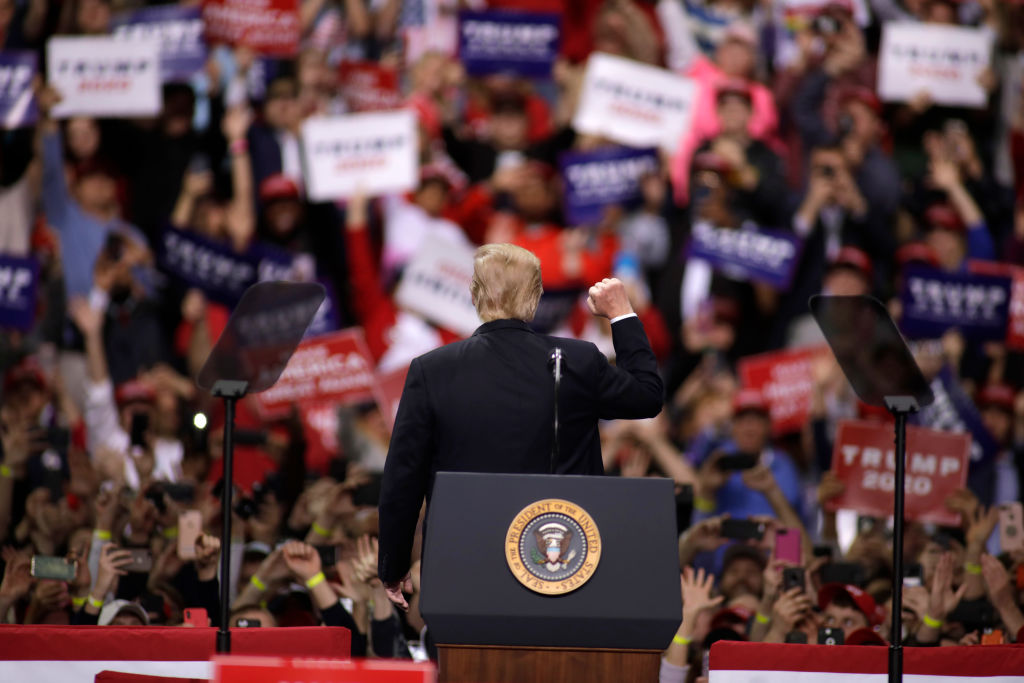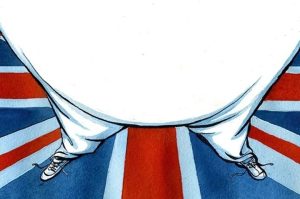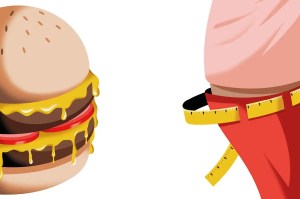Since 2016 there’s been a great deal of irony-free discussion about a second American Civil War. This ongoing commentary is not merely another symptom of Trump derangement syndrome. It has appeared in the form of serious thought experiments, popular novels, clickbait punditry, in interviews of academics, by authors on the Left, the Right, and even The New Yorker.
When Thomas E. Ricks asked a group of national security thinkers what the chances were of conflict breaking out in the next 10 to 15 years, the rough consensus was that there was a 35 percent chance it would happen. Nearly a third of Americans polled believe a Civil War will break out before 2023. Everybody, it seems, is a young boy playing with regiments of tin soldiers. The fear of, or secret hopes for, a Civil War II appear to be truly bipartisan.
That there is a Cold Civil War between Red America and Blue America cannot be disputed. When Blue activists chase Red politicians from restaurants; when House Majority Whip Steve Scalise was shot by a unhinged leftist gunman; when every news item is sheathed in an ideological carapace as soon as it is reported; when Hillary Clinton argues that ‘you cannot be civil with a political party that wants to destroy what you stand for’ and when the president describes his opponents’ actions as ‘evil’ and ‘treasonous’ – these are the signs of the times.
Ideological warfare that began in the 1960s has become total. Fundamental disagreements have hardened to the point where dialogue, reasoning and compromise appear impossible. As Disraeli once wrote of England, there now appear to be two nations:
‘…between whom there is no intercourse and no sympathy; who are as ignorant of each other’s habits, thoughts, and feelings, as if they were dwellers in different zones, or inhabitants of different planets.’
How is the conflict to be won? Red America adopts a strategy centered on the Supreme Court, Blue America attempts to excommunicate any cultural figure that doesn’t fall into line with its values. Is either route really the way to achieve political supremacy? Winning the presidency made no real difference for either side. Barack Obama’s election was supposed to end the culture wars by transcending them. Donald Trump’s election was supposed to herald the end of the Republic, but this dog of fascism never really barked. Instead an atmosphere of nervous stagnation and exhausted fatigue endures.
Writing in the National Review, Victor Davis Hanson claims ‘We are now nearing a point comparable to 1860, and perhaps past 1968.’ Writing for The American Conservative, Michael Vlahos accepts war as an inevitability:
‘Tragically, our divide may no longer be an outcome that people of goodwill work to overcome. Schism – with our nation in an ideological Iron Maiden – will soon force us all to submit, and choose.’
And here is the Claremont Institute’s Angelo Codevilla on what might happen after the next election:
‘Were the Left returned to power after 2020, it would not tweet about resistance—it would crush it, officially and by inciting unofficial violence. How would the crush-ees react? At what points would clashes occur? With how much violence? Sooner or later, somebody is going to get killed. Then what?’
Each of the essays quoted above is thoughtful, cogent and suffused with a deep understanding of American history. Together they provide a comprehensive overview of why the cold Civil War might become hot. The problem is that they have nothing to say about how it might happen. A Civil War entails more than just volatile rhetoric, polarization and scattered, disjointed acts of terrorism. It implies a level of sustained, organized violence that looks unlikely to occur in the near future for one major reason.
Today Americans enjoy, by some distance, the worst diet in the developed world. As of 2014, the average American eats 3,340 calories a day. There are 78 million obese adults living in America. If they managed to summon the energy to secede from the Union, the nation they formed would be bigger by population than Italy, France and the UK. Just as the dapper, diffident, pink-cheeked gentleman was once the symbol of Britain’s international prestige, American power has its own archetypal figure: a greedy slob who cannot stop eating. Was there ever a civil war in a country with a population this fat?
During the first Civil War a Union soldier’s diet was not particularly enviable. Their rations might include salted pork or beef, a warm brown liquid pretending to be coffee, and dried fruit and vegetables if they were in season. Men on both sides enjoyed Hardtack, a notorious biscuit that was often infested with insects. It was so hard that it could only be eaten after being repeatedly hammered with a rifle butt. Would generations of Americans reared in front of televisions and weaned on high-fructose corn syrup be able to march much further than the fridge, let alone to the ridge of some future Gettysburg?
Stalin once asked where the Pope’s armies were. Exactly the same statement can be made of Red and Blue America. Is Don Jr going to lead a cavalry charge? Is Lena Dunham going to launch commando raids on critical infrastructure? The United States is not yet Lebanon. Current polarization is better thought of in terms of popular culture – reality television, social media, even wrestling – than through analogies to the last Civil War.


















